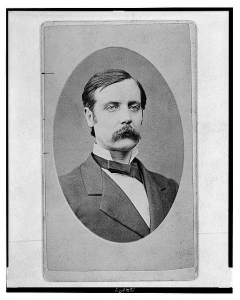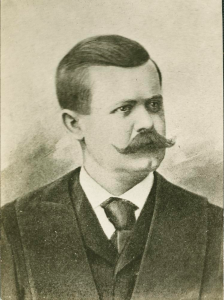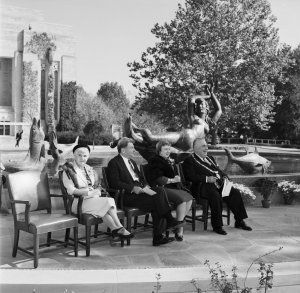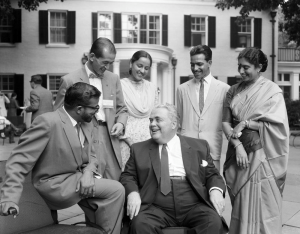By: Allison Larmann, Bicentennial Intern, Class of 2017, International Studies Major, Bloomington
The NYT Criteria
Since 1851, The New York Times has been considered a premier national news source. The New York Times does not take its responsibility to report news to the nation lightly and therefore its criteria to decide who makes it into the obituary section is just as rigorous.
According to The New York Times obituary editor Bill McDonald, “Many people think of a Times obit as the last word. So it’s a double weight.”[1]

The New York Times has a database of 1,600-1,700 prewritten obituaries so that they are as timely and accurate as possible when they are needed. The publication has to be ready at a moment’s notice to cover the leaders in music, film, academic, culture, and business plus other notable individuals.[2]
The top criteria The New York Times obituary editor Bill McDonald considers for an individual to merit an NYT obituary is: “Is this death national news? Did this person have such an impact on this world that his or her death is something our readers should be told about?”
Bill McDonald goes on to state that “You had better have done something special at the paper [The New York Times staff], or elsewhere, if you want to be buried beside kings, captains of industry and Nobel Laureates.” They do not always base their decision on popularity of the individual but also their lasting impact on the “fabric of time.”
The New York Times has provided a catalog for the most notable people of our age. Over 150 people associated with Indiana University have been featured in the obituaries section. At first the idea of putting together this list sounded simple, but the research tested my knowledge of how the university was portrayed at a national level and my universal belief that everything could be found online.
Additionally, The New York Times focuses their effort on what is most important for the public to know about a person so some obituaries left out the name of Indiana University. This project relied on multiple different sources including https://www.nytimes.com/, ProQuest New York Times database, and the Indiana University Archives. This project allowed me to see the lasting impact that Indiana University has had on the world.
Notable IU Alumni Through the Decades

Cyrus Nutt (1814-1875)
Nutt was president of Fort Wayne Female College (1849-1850) and president of Whitewater College (1850-1855). In 1860, Nutt was appointed president of Indiana University and under his presidency women were admitted to IU for the first time. The school began to grow and expand in academics but also new organized sports, such as baseball. Nutt was president of IU until 1875, one month before his death.

Addison C. Harris (1843-1916)
Harris had a prominent career as a lawyer and law professor at Indiana University. Harris was then appointed by President McKinley to be Ambassador to Austria-Hungary and then President of the Indiana Law School, which later became the Indiana University McKinney Law School.

John Merle Coulter (1852-1928)
Coulter’s most prominent role was serving as Indiana University president from 1891-1893. Coulter was also the president of Lake Forest University (1893-1896) and chaired the botany department at the University of Chicago.

David Starr Jordan (1851-1931)
Jordan had two prominent positions: seventh president of Indiana University and the founding president of Stanford University. Jordan also was an ichthyologist, professor, and peace activist.

Ernest Hiram Lindley (1869-1940)
Lindley was a professor of philosophy at Indiana University before becoming the Chancellor of Kansas University.
Howard V. Hornung (1888-1950)
Hornung had a long career in the Detroit Michigan school system as a teacher and later principal. He also served as president of the Detroit Teachers Association and created a scholarship for students from the city to come to Indiana University. Hornung also was the president of the IU Alumni Club in Detroit.

Roscoe Carlyle Buley (1893-1968)
Buley was a history professor at Indiana University from 1925-1964 and then an emeritus professor until his death. In 1951, Buley won the Pulitzer Prize for history for his work The Old Northwest: Pioneer Period 1815-1840.

Grace M. Showalter (1923-1972)
Showalter was the Vice President of the Indiana University Foundation for 25 years. She then became the first female director of the IU Foundation at which time she donated funds for the installation of Showalter Fountain on the Bloomington, IN campus. Showalter and her husband were long time donors to IU.

Elizabeth Koontz (1919-1989)
Koontz was the first black president of the National Education Association and created a Civil Rights Division for the NEA. Koontz was also the Director of the Women’s Bureau under President Nixon and fought for the passage of the Equal Rights Amendment (ERA).

Hoyt Clark Hottel (1903-1998)
Hottel was a chemical and combustion engineer and was considered a leader in the field of improving and developing new alternative fuels.

Herman B Wells (1902-2000)
Wells was president of Indiana University from 1937 to 1962 and then assumed the role of chancellor. He is widely considered to have transformed Indiana University from a small Midwest university into a large international institution. From economics professor to IU Chancellor, Wells dedicated 70 years to improving Indiana University.

Elinor Ostrom (1933-2012)
Ostrom was a political science professor, founder of the Workshop in Political Theory and Policy Analysis, and a political economist at Indiana University. In 2009 Dr. Ostrom won the Nobel Prize for Economic Sciences for her analysis of economic governance. To date, she has been the only woman awarded this prize.
Read more about this project here: https://blogs.iu.edu/bicentennialblogs/2017/05/26/the-tale-of-two-projects/
Works Cited
[1] “Talk to the Newsroom: Obituaries Editor Bill McDonald” The New York Times. Sept. 25, 2006.
[2] Dunlap, David W. “When Death Comes, and the Obituary Quickly Follows”. The New York Times. Oct. 8, 2015.